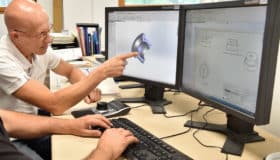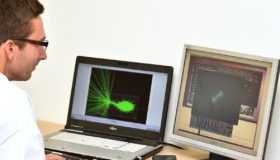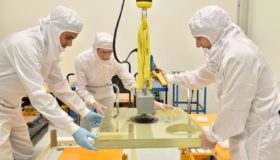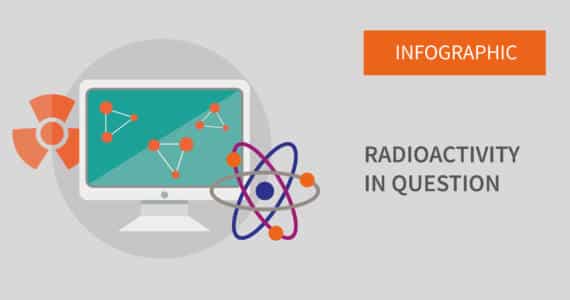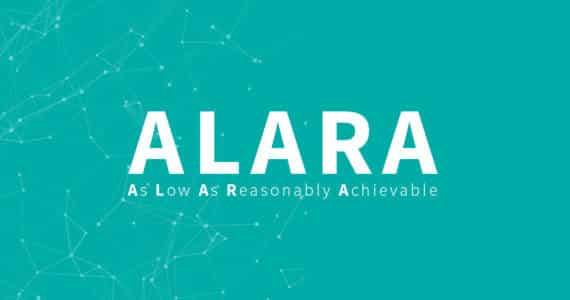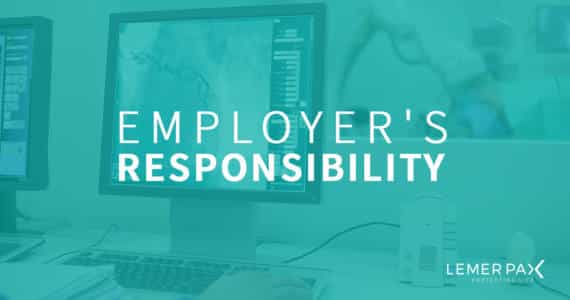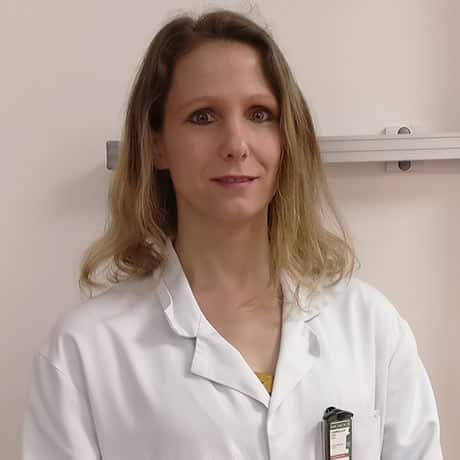
3 questions for Karen Chamoulaud, RPO at the Centre Hospitalier Sud Francilien
The guardian angel of nuclear medicine services is playing an increasingly important role
The use of ionising radiation has diversified, with the emergence of new procedures, and the function of RPO, radiation protection officer, is adapting to this change. With the decrees of June 2018, transposing the European directive 2013/59/Euratom, the RPO becomes a Radiation Protection Advisor (RPA) and is at the centre of a system for optimising and monitoring radiological risks. The objective is to propose a graduated approach that is better adapted to the numerous situations where people or the environment are exposed to ionising radiation. While the RPA’s first task is to review the zoning and individual studies for the classification of workers in accordance with the new requirements of the Labour Code, his/her proactive approach is becoming more pronounced within this new radiation protection organisation.
In the medical field, RPAs are often radiographers, nuclear medicine technicians or medical physicists who provide information and training. Karen Chamoulaud, medical radiographer and radiation protection technician, works as RPA in the Radiation Protection and Medical Physics Department at the Centre Hospitalier Sud Francilien. (CHSF)
Will the new regulations restructure the job of RPO and change the organisation of your working time?
I have been working as a full-time RPA since 2008. I carry out internal radiation protection technical inspections, in all departments using ionising radiation (monitoring of zoning, job studies, monitoring the efficiency of PPE and CPE) checking the overall good condition and wear of X-ray tubes using specific X-ray emission and ghost detectors. And that’s not going to change. We will also continue to define appropriate protective measures around radiation sources, define risk areas and carry out dosimetric monitoring, as well as train exposed workers. I think, however, that the new regulation will impose an additional burden on us with risk assessment for all.
Before that, we could categorise ourselves the staff to be assessed. Risk assessments will now be required for all trades. So obviously more studies, and possibly the risk of professionals who do not feel concerned failing to see the point. Let’s take the example of a stretcher bearer in an X-ray room and a scanner room. Until now, stretcher bearers were not included and not monitored as we had set up procedures to avoid counting them amongst our potential targets. The situation is different now. They are still not monitored, but we need to prove why this is the case. So a risk analysis extended to our stretcher bearer. Currently, in the same vein, we are setting up a surveillance system for intensivists. They go to the operating room with a dosimeter and a near-zero radiation risk. But it’s up to us to prove it! With this risk assessment we will almost certainly confirm they do not need to wear a dosimeter. One less constraint and a cost saving for the hospital. This new regulation will in fact allow us to clarify the situation transparently by involving all the staff of a nuclear medicine department.
Risk assessments will now be required for all trades.
So obviously more studies, and possibly the risk of professionals who do not feel concerned failing to see the point.
Who are the good students regarding radiation safety awareness?
Radiographers are very attentive to the issue of radiation protection. People working in nuclear medicine, interventional radiology, interventional coronography, in cardio, are also involved, but for vascular and orthopaedic surgery it is more complicated. They are not always aware of the risks associated with ionising radiation. You must adopt the right approach to enforce the administrative standard and this is not always obvious with doctors. So I go to the operating room, 3 times a week, and if for example an operation takes more time I stay with the team until the end. I also use TLD discs designed for job studies and to evaluate and improve the behaviour at work of the medical team. I also inform interventional radiology personnel by conducting a risk assessment and presenting the results of the job studies over a breakfast, still in order to raise the awareness of as many people as possible. Fortunately, the younger generations are more sensitive to these issues and more involved. They are really aware of the risks and for us it is great, since they are reliable and therefore help us enormously in our monitoring and awareness tasks.
They are not always aware of the risks associated with ionising radiation.
You must adopt the right approach to enforce the administrative standard and this is not always obvious with doctors.
Could you describe your typical day?
There is no such thing as a typical day. No two days are alike and that’s good, because I like the urgency and the change of activity during the day. Taking care of “radiation protection emergencies” at short notice, in the operating room, in radiology, or in the nuclear medicine department, fixing malfunctions of the ionising radiation emission indicator lights or mobile C-arms, all this keeps you extremely busy and leaves you no time to get bored, take my word for it.
From one year to the next, the problems that we thought had been solved forever seem to crop up again as if by magic. Once the practices have been improved, we sometimes have to start all over again because the table in the operating room has been replaced, causing changes in behaviour. The use of the arc is no longer adapted to the previous year’s configuration and, once again, we must all go back to the drawing board until the situation is perfect. Also, a radiologist and a surgeon both have their own quite specific problems.
But to answer the question more precisely, I start my day at 8 o’clock, by training the night shift staff, for example. I then check the radioactive waste to determine which can leave the hospital and which cannot. I also check the condition of the radioactive beacons that have sounded and the level of the decay tanks. The aim in fact is to be involved in the entire management of the nuclear medicine department, always striving to make staff aware of the risks of radiation, in particular by preparing job studies. I continue in the afternoon by checking the operational dosimetry of night shift staff, not to mention the management of hundreds of dosimeters sent every month or every three months to the competent bodies. Finally, I do not forget our role with the management with whom we are in permanent contact to present new materials or raise awareness about the risks involved. It is only on this condition that all of us, together, can improve safety conditions in the field of radiation protection. I have a training course to take every 5 years and I communicate frequently with my RPA colleagues via the Internet, and during professional seminars, to compare and improve our working methods.
